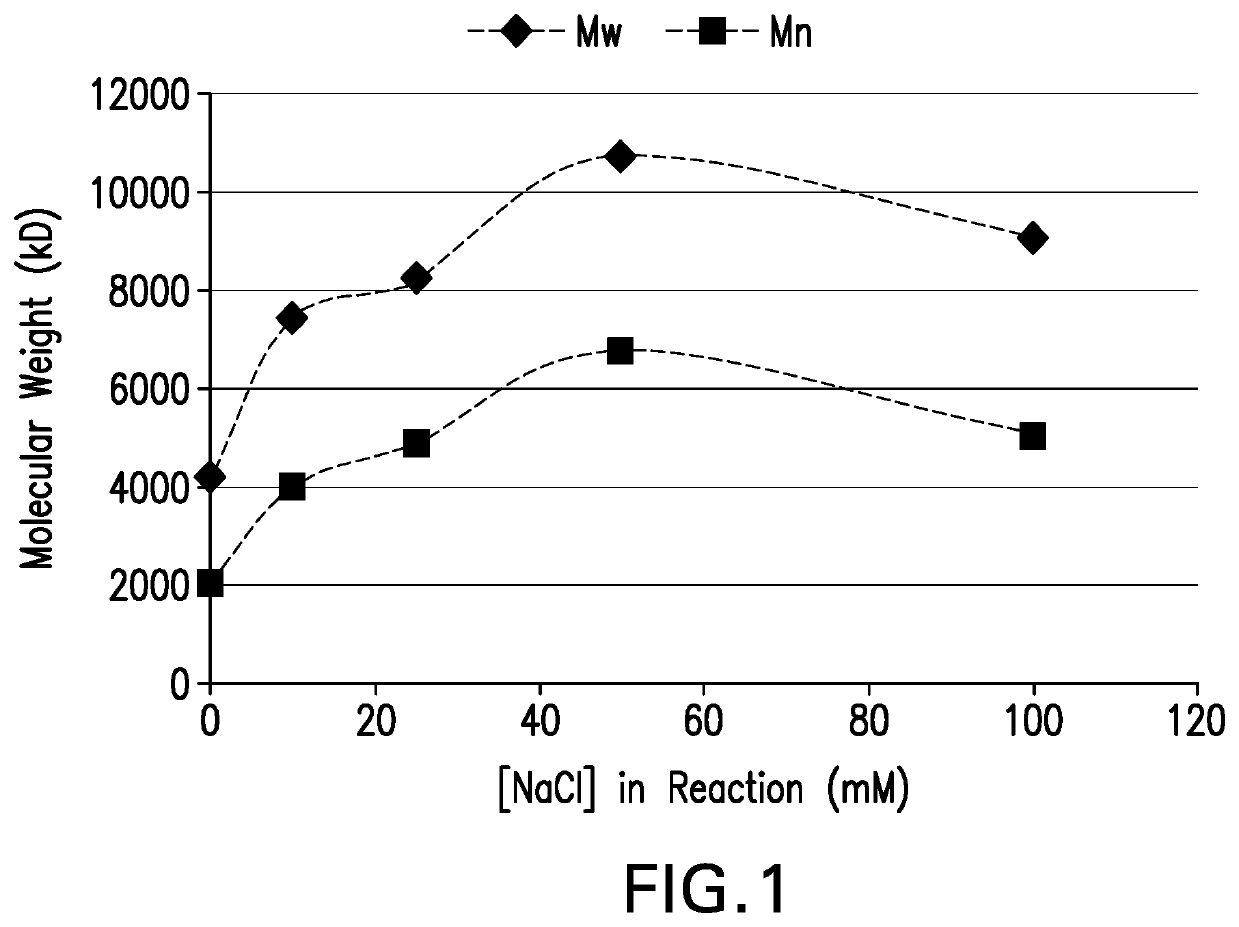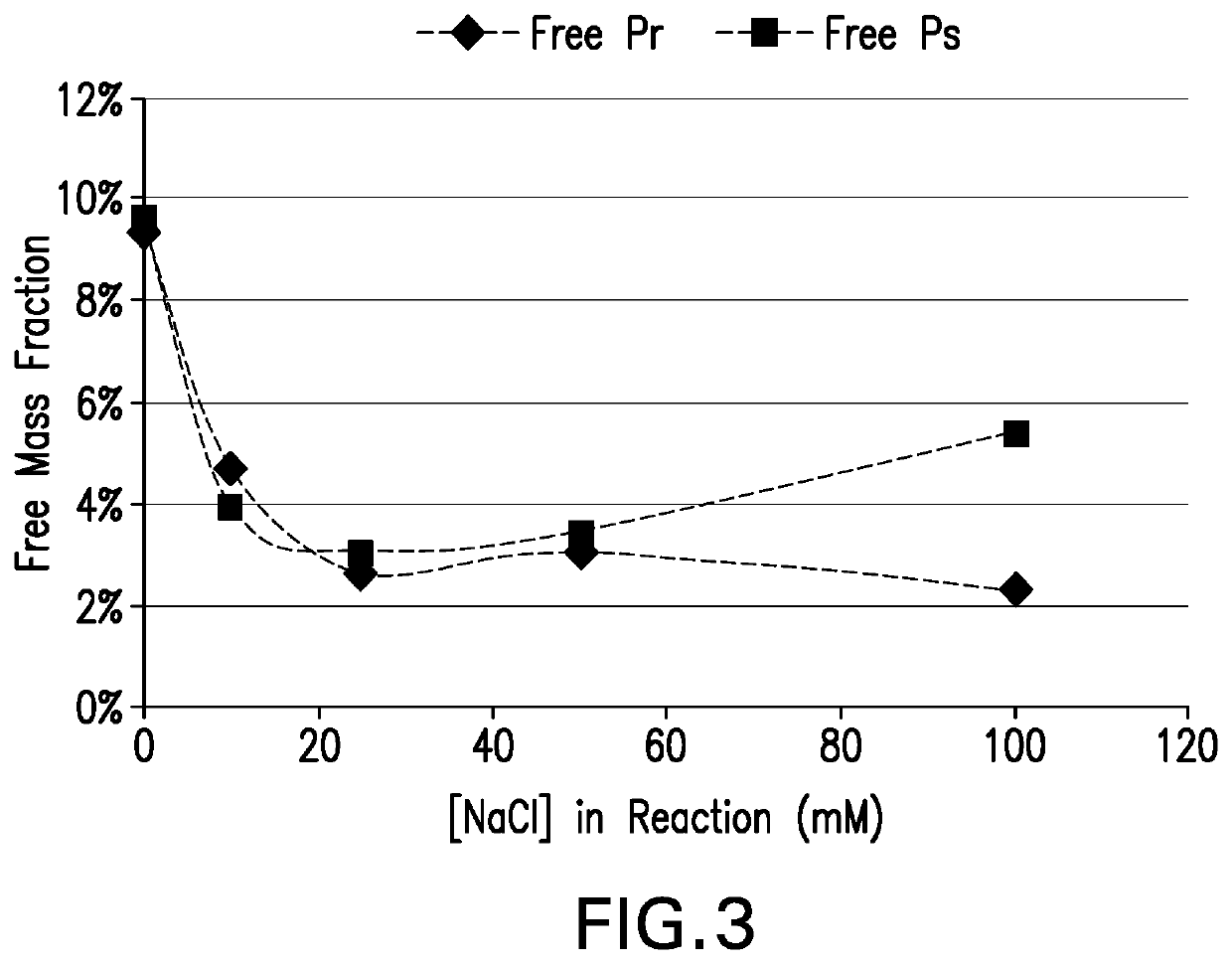Processes for the formulation of pneumococcal polysaccharides for conjugation to a carrier protein
a technology of pneumococcal polysaccharides and carrier proteins, which is applied in the field of process for the formulation of pneumococcal polysaccharides for conjugation to a carrier protein, can solve the problems of limited serotype coverage of prevnar® in certain regions of the world, and the complications of these diseases can be significan
- Summary
- Abstract
- Description
- Claims
- Application Information
AI Technical Summary
Benefits of technology
Problems solved by technology
Method used
Image
Examples
example 2
onjugation Methods
Polysaccharide Size Reduction and Oxidation
[0133]Purified pneumococcal capsular polysaccharide powder was dissolved in water and 0.45-micron filtered. Unless otherwise specified, polysaccharides were homogenized to reduce the polysaccharide molecular mass. Homogenization pressure and number of passes through the homogenizer were controlled to serotype-specific targets (150-1000 bar; 4-7 passes).
[0134]Size-reduced polysaccharide was 0.2 micron filtered and then concentrated and diafiltered against distilled water using a 5 kDa or 10 kDa NMWCO tangential flow ultrafiltration membrane.
[0135]The polysaccharide solution was then adjusted to 22° C. and pH 5 with a sodium acetate buffer to minimize polysaccharide size reduction due to activation.
[0136]The purified polysaccharides were prepared for conjugation, i.e., activated, using sodium metaperiodate oxidation (See Anderson et al., 1986, J. Immunol. 137:1181-1186; and U.S. Patent Application Publication No. US201101950...
example 3
olysis of Polysaccharides from Serotypes 12F, 23A, 24F, and 31
[0143]Conjugation of pneumococcal polysaccharides to proteins by reductive amination in an aprotic solvent such as DMSO has been previously described. Activated polysaccharides (Ps) and proteins (Pr) are typically lyophilized, resuspended in DMSO, then blended and incubated with sodium cyanoborohydride and sodium borohydride to achieve conjugation. Polysaccharides may be mechanically size-reduced (e.g. by homogenization) prior to oxidation to reduce the Ps molecular mass and provide a consistent Ps size for conjugation. For many pneumococcal serotypes, conjugation of mechanically size-reduced and oxidized Ps yields conjugates that meet target attributes for size, lysine consumption, free polysaccharide, and free protein. However for some serotypes it was found that target conjugate attributes were difficult to achieve with this process, even after optimizing process parameters.
[0144]Purified pneumococcal ...
example 6
on of Monovalent Conjugates
[0173]Pneumococcal polysaccharide-CRM197 conjugates were prepared as described in Examples 2-5. The required volume of bulk conjugates needed to obtain the target concentration of individual serotypes were calculated based on batch volume and concentration of individual bulk polysaccharide concentrations. Individual serotypes (12F, 15A, 16F, 17F, 23A, 23B, 24F, 31, and 35B) were combined with excipients, sterile filtered and added to APA under mixing conditions. The final concentration of each monovalent conjugate vaccine was 4 μg / mL (w / v PnPs) with 20 mM Histidine, 150 mM NaCl, 0.2% (w / v) PS-20 and 0.250 mg / mL (w / v Al) in the form of APA.
PUM
| Property | Measurement | Unit |
|---|---|---|
| temperature | aaaaa | aaaaa |
| molecular weight | aaaaa | aaaaa |
| mass ratio | aaaaa | aaaaa |
Abstract
Description
Claims
Application Information
 Login to View More
Login to View More - R&D
- Intellectual Property
- Life Sciences
- Materials
- Tech Scout
- Unparalleled Data Quality
- Higher Quality Content
- 60% Fewer Hallucinations
Browse by: Latest US Patents, China's latest patents, Technical Efficacy Thesaurus, Application Domain, Technology Topic, Popular Technical Reports.
© 2025 PatSnap. All rights reserved.Legal|Privacy policy|Modern Slavery Act Transparency Statement|Sitemap|About US| Contact US: help@patsnap.com



